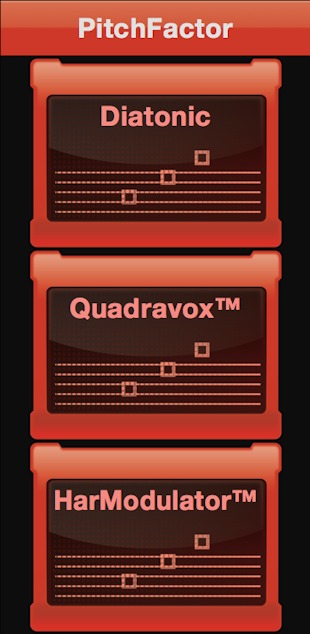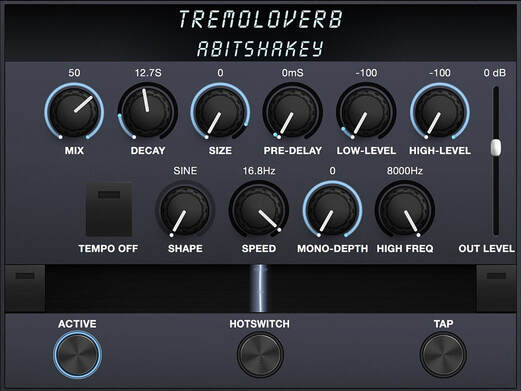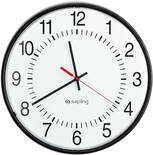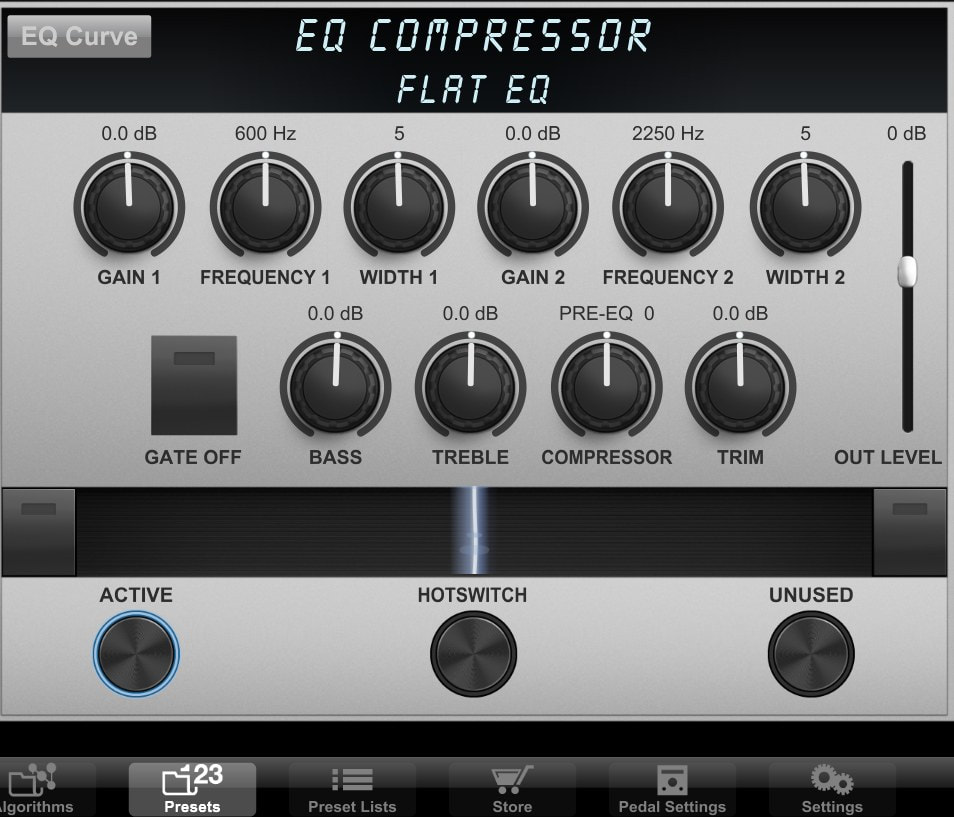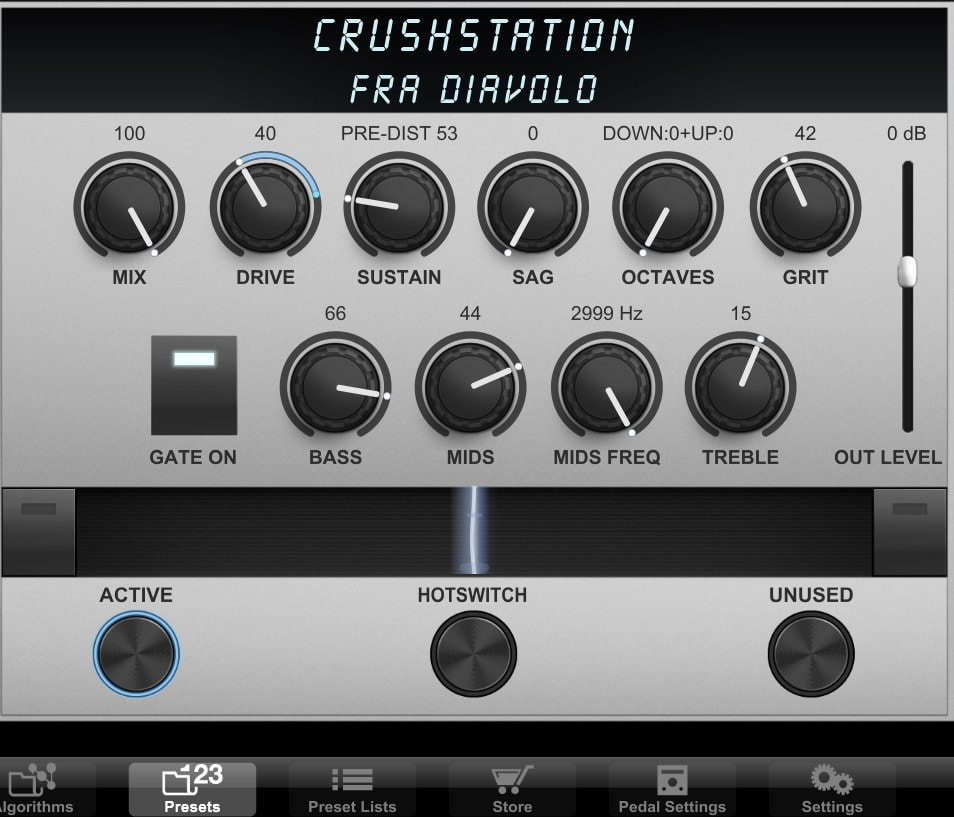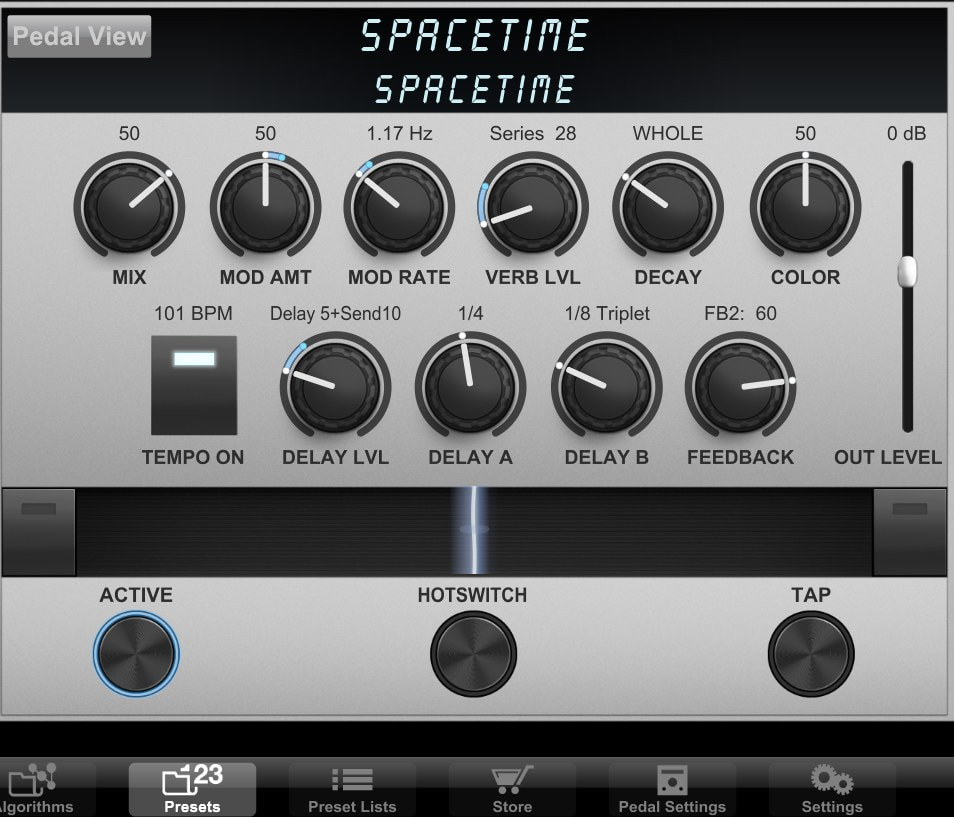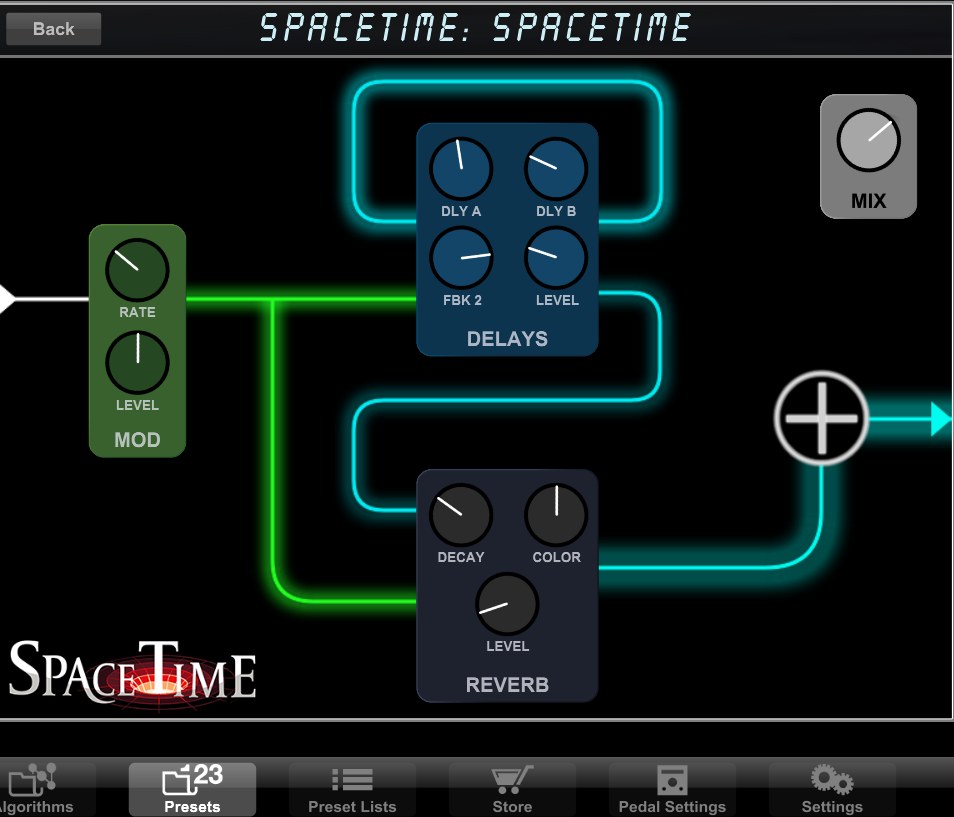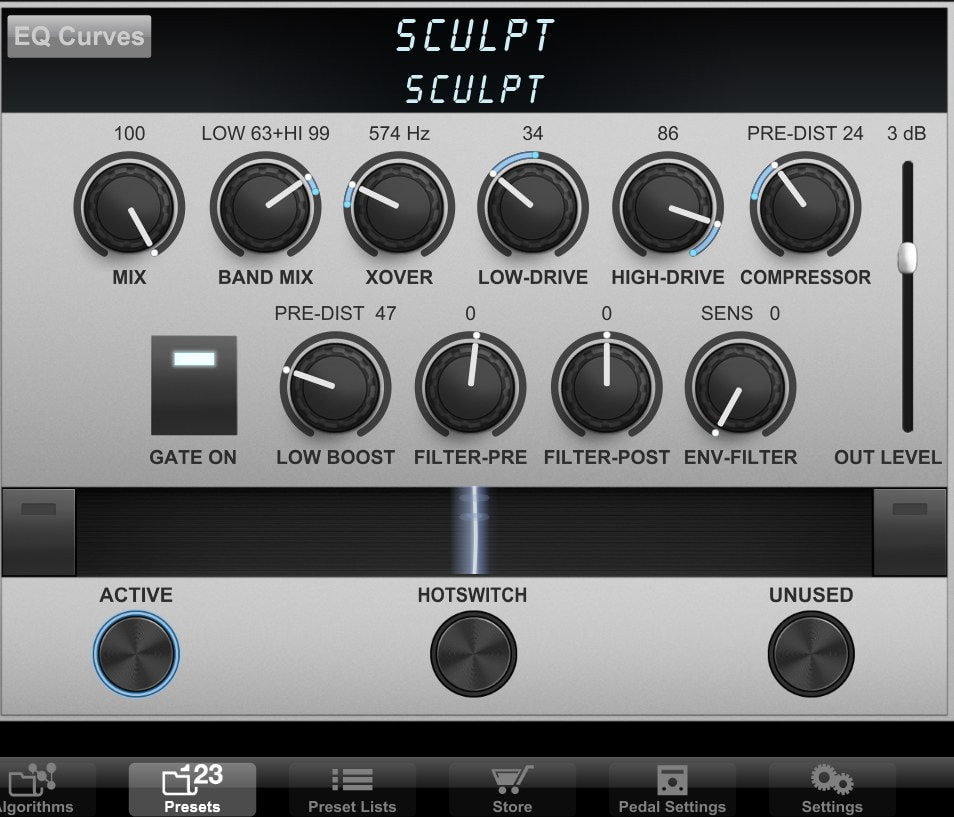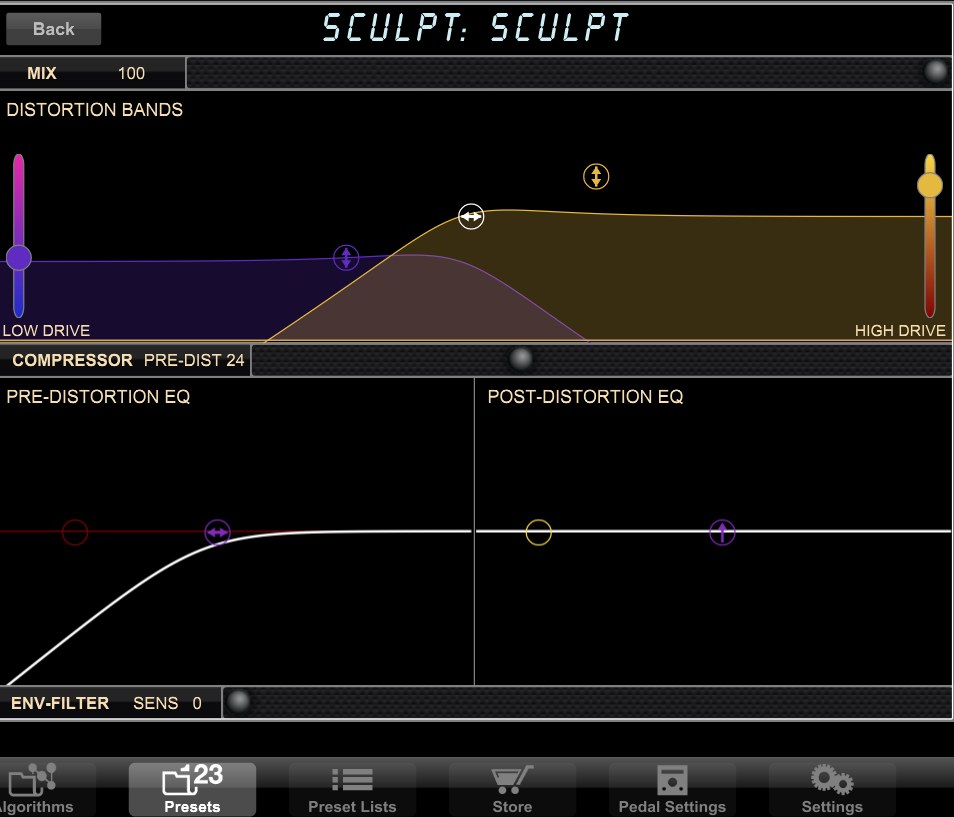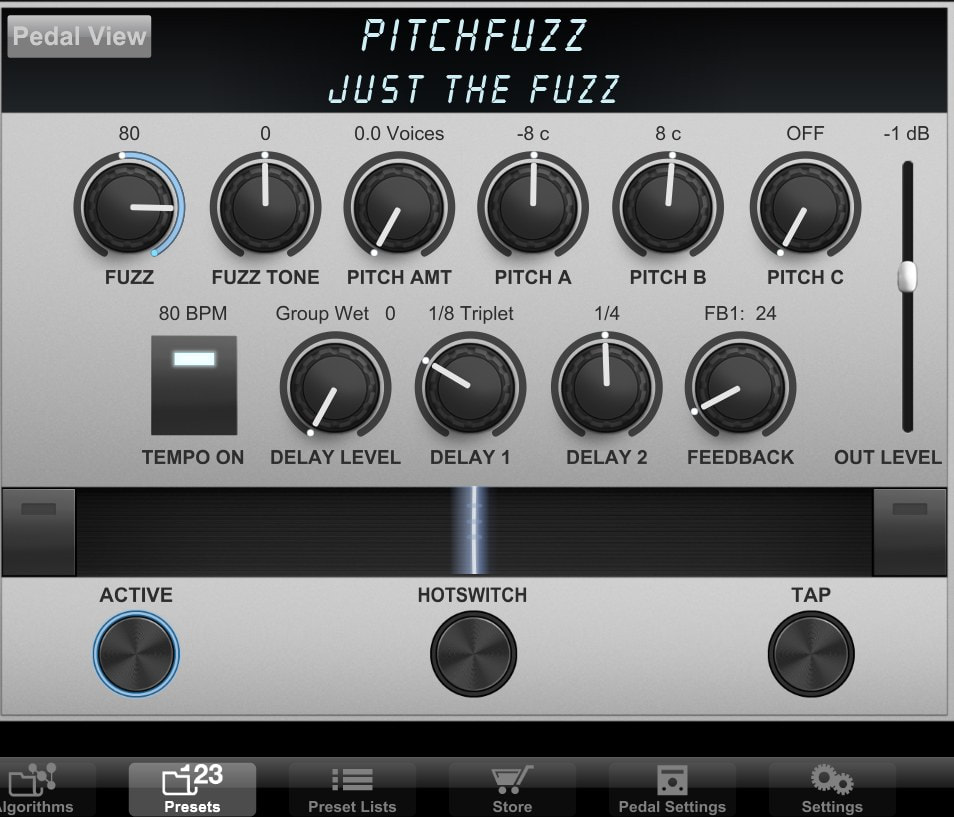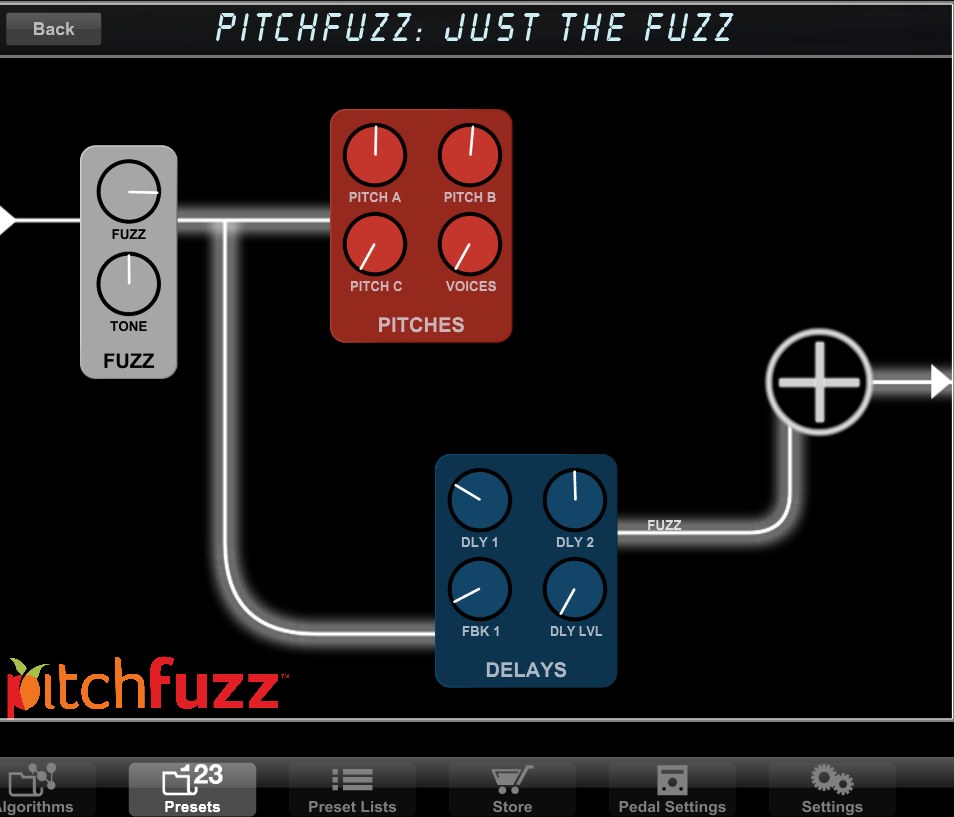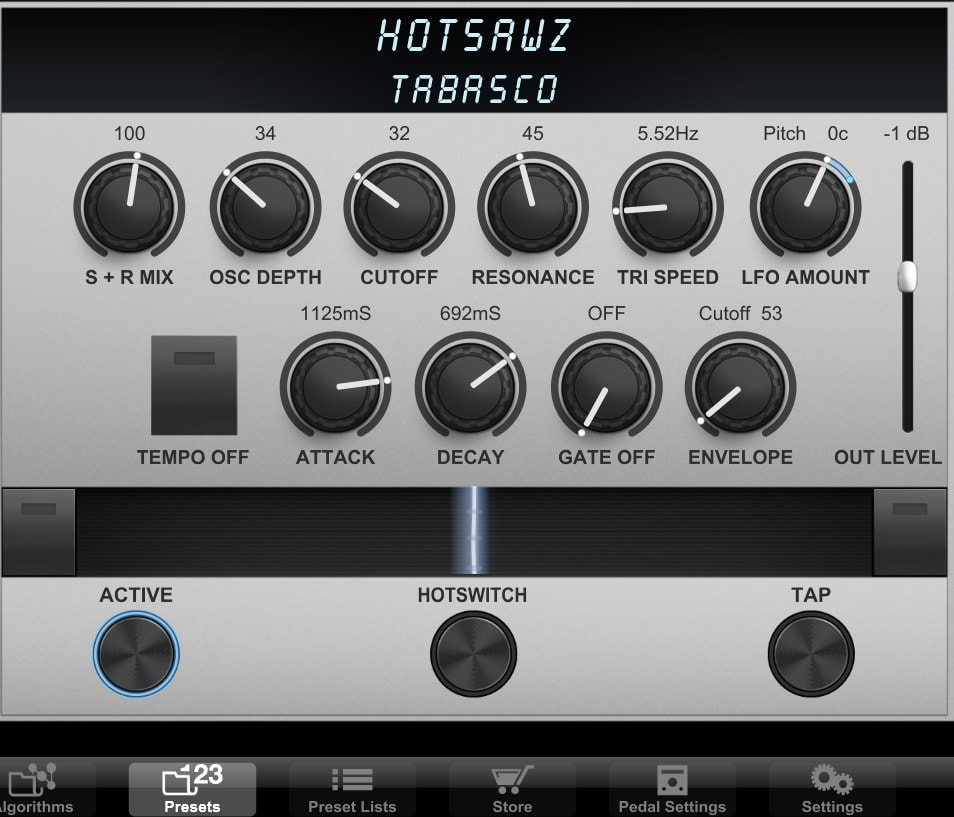|
:: TIMEFACTOR
:: MODFACTOR
From swampy sine wave oscillation to modern, choppy pulse, TremeloPan can practically replace any dedicated pedal. There is plenty to explore. Lastly, zany audio-mangled ring modulator effects are in abundance throughout all of RingMod’s presets. Certainly you can go all “Dr. Zorbo” with RingMod if you want. Perhaps I’m too old and stayed in my ways, but I don’t know what I’d ever do with this algorithm, and I don’t personally know any other guitarist who uses ring modulation. Be that as it may, I’m confident that many synthesists will find lots of use for it. After all, the H9 is not just for guitarists – bassists and keyboardists will love it too. *Wink. :: PITCHFACTOR
:: SPACE
I’m totally digging the “SPRING” algo. I’m snobbishly persnickety where spring reverb sounds are concerned; after all, I grew up with old Fender and Traynor tube amps back in the day long before they were considered vintage – they were just what was commonly available. That said, I know what good, genuine spring reverb sounds like, and this particular algorithm is one of my very favorite replications of it. True, it’s a digital reproduction, but direct, side by side comparison reveals it to be a very worthy stand-in. There are reams of depth and richness available with just the right amount of sproingy-ness. What’s more, a sumptuous feast of temelo-isciousness is right there for the picking as well. Other stand-aparts that I’d like to highlight are “DynaVerb”, “Shimmer”, “ModEchoVerb” and “Blackhole”.
H9 Exclusives: Dear reader, are you tired yet? Well, too bad, coz there’s still more! . . . *Cheeky Grin. While I am tempted to apologize for the length of this article, let’s not blame the author – it’s Eventide’s fault, for sure! After all, aren’t Eventide’s engineers the deviants responsible for veiling 49 algorithms under H9’s alluring exterior? All kidding aside, there is much to uncover -- in light of this write-up being a deep review. Let’s quickly take an overview of the specialties that Eventide has developed expressly for the H9.
:: EQ COMPRESSOR EQ and Compression; that’s not terribly exciting, is it? Well, I guess it depends on whether or not you need a decent compressor that also boasts exemplary, built-in tonal control. Having been so greatly impressed throughout my exploratory experimentation of H9’s over-the-top, ‘Gee Whiz’ FX, I honestly wasn’t expecting to spend much time with this particular module. I’m not hurting for good compressor pedals. If I need squish, I can turn to my Monte Allums modded CS-3. If I’m in need of big, ballsy Tele compression, my early ‘80s, Japanese-made CS-2 is da bomb. For most nearly any kind of compression requirements, the Wampler Ego on my board is hard to beat. As it turns out, the EQ COMPRESSOR algo quickly discombobulated my assumptive preconceptions; it wound up retaining my sincere interest for the better part of 90 minutes straight.
The EQ COMPRESSOR might not replace a high-end, boutique compressor pedal, but it does a good all ‘round job of holding down typical compression duties. My one niggle with it is that you can detect its digital DNA at aggressive compression settings; the attack becomes quite heavy handed and potentially ‘clicky’. However, I suspect that this could be smoothly remedied if there were a ‘Mix’ knob, or at least an ‘attack time’ parameter added. Hey, Eventide Team, please take this last observation under consideration for a (hopefully) upcoming revision, ok?" Crushstation is both good and not-so-good. It is outfitted with really nice accoutrements, but its androidian construction is not made of tubes or silicon op-amps; thus it doesn’t organically ‘breathe’ the way that 12ax7 or JRC4558 circuits do. Compared to all of the phenomenal pitch, harmonizing, modulation, spatial and echo-y effects packed into an H9 Max, I have pause with the two distortion fixtures trussed into the fray: Crushstation and Sculpt. Let me draw two polar-opposite comparisons. If I were just starting out with a cheap, make do $30 fuzz-awful noise box, but then found a shiny new H9 under the Christmas Tree with my name on it, I’d think it was a monumental step up. Ergo, if I were a seasoned, road-scarred, grizzly old professional rocker, I might not be so awestruck.
Overall, I’ve found that this algo’s sweet spot is generally realized in the mid gain territory with slightly reduced treble settings. Add in a bit of dynamics sweetening post-EQ, and you’ll achieve an adequate, gig-able distortion/overdrive tone. While ‘Grit’ can certainly add heft to the low mids, it can start to mud up if you aren’t judicious with it. Last, but not least, a very cool octaver is onboard too! Thanks to Eventide’s unparalleled pitch tracking and accuracy, the pitch-shifted octaves are really, really good. You have a choice of combining both (-1) and (+1) octaves, or either one by itself. Furthermore, you can dial in the octave(s) levels to taste. Overall, this is a highly usable distortion (plus optional octaves) algorithm. It does head in the direction of analogue-ish sonority, but ultimately, it understandably remains digital sounding -- not bad, just digital. I rate this one 7.5 out of 10. :: SPACETIME Ladies and gentlemen, of all the crazy, cool, and unique FX accessible in the H9 Max, I consider the lustrous, capacious SPACETIME agglomeration to be the most apt, and multi-servicing of the lot. As immense as the collection of effects is, and regardless of how absolutely enthralling many of the sounds are, I was initially very disappointed to learn that only one algorithm can be loaded at a time. My disillusionment began to subside as I investigated “ModEchoVerb”, “TremeloVerb”, and some of the other 2-for-1 offerings. Notwithstanding, most guitarists would probably agree with me that there are three essential effects that should be found on any pedal board – following one’s requisite overdrive/distortion unit(s) of choice: a really nice reverb, a great delay, and a sweet chorus-type of modulation. Yippee! That’s exactly what Eventide has gifted us with in the SPACETIME capsule. In keeping with the configurability of H9’s two-fold algos, this trifecta can be set up to use any one of the individual elements, or in combination – including all three simultaneously. If this weren’t enough, these can be flexibly routed in either parallel or in series (there are certain limitations). If this sounds slightly confusing, don’t worry about it -- there’s a brightly colored, dynamic flowchart called ‘Pedal View’ available that clearly shows you what’s happening. To help get you on your way, 23 inspiring presets are parceled in for your immediate musical pleasure. Of course, tap-tempo and expression pedal support are at-the-ready in a jiffy. The modulation is most similar to a chorus and is the first effect in the signal path. The Delays are based on Eventide's Vintage Delay Algorithm from the TimeFactor pedal, and the Reverb section draws from both the Plate Algorithm in Eventide's SPACE pedal, as well as Eventide's ULTRA REVERB Native Plug-in. Unique to SpaceTime is the ability to route the Delays and Reverb in series or parallel after Modulation, further adding to its versatility and creative applications.”
:: SCULPT I’ll keep this segment abbreviated since much of my commentary regarding “Crushstation” and its digital makeup applies to this one as well. The primary difference between the two is that to my ears, SCULPT is somewhat smoother sounding. Where the former comes across a tad edgy, even at its lower gain settings, this one can be a bit milder, reminiscent of symmetrical overdrive pedals from yesteryear. Of course, your assessment might differ, but that’s how it sounds to me. And, similarly to Crushstation, this one also grants full user control over PRE or POST EQ compression amounts. It is the EQ differentia that stands out the most, seeing that SCULPT employs a two band shelving layout as opposed to Crushstation’s three band parametric blueprint. A user can freely set the crossover’s intersect anywhere between 40 Hz to 5 kHz. Subsequently, each band hosts its own Drive control, allowing you to tailor the amount of distortion dedicated to that band. I foresee this being well received by bassists, since low end fundamentals can remain unprocessed (or lightly processed) while the higher band is harmonically overdriven — keeping the boom intact as a strong, harmonic presence slices through a congested mix. If you’re looking for big, phat, bottom end chug, give the ‘Low Boost’ knob a twist.
Not unlike the extra convenience observed in SPACETIME’s second graphical view, this potent module of rock n’ rollery also provides an alternate panel: “EQ Curves”. Herein the crossover point and various EQ parameters are represented as nodes on a graph. You simply click n’ drag the sundry bits to quickly find your preferred sound instead of twisting dials on the main screen. Some users will no doubt find this to be a more intuitive and speedy way of gittin’ er done. :: PITCHFUZZ PitchFuzz is a multi-effects algorithm that rolls analogue-esque Fuzz, a trio of Pitch Shifters, and a pair of Delays into one, easy-to-use module. The first in line is the Fuzz, which takes its inspiration from classic analog fuzz pedals (as well as influence from Eventide's own CrushStation and Sculpt algorithms). Pitch-shifting comes in second along the signal path and is based on Eventide's PitchFlex Algorithm from the PitchFactor pedal. When the signal arrives at its final Delay stage in the chain, the train conductor bids farewell, assuring you that the echoes trace their lineage back to the Vintage Delay algorithm found in TimeFactor. Both Delays can follow the Pitch Shifters, culminating at the entire output signal or alternatively, they can be individually added to two of the pitched voices only, creating arpeggiated type effects. Our aim with PitchFuzz was to create a single algorithm that could run distortion/fuzz into Eventide pitch shifters, and then into Eventide delays. It allows you to recreate some of the classic guitar sounds of artists such as Jimmy Page, Brian May, Frank Zappa, Eddie Van Halen and Steve Vai—all of whom used Eventide gear in their rigs during the ‘70s and ‘80s. It can also be used to recreate distortion sounds from the ‘90s alternative rock era and beyond.” By my estimation, the above-quoted press release statement is accurate and well founded. It’s outside the scope of a review editorial to explain the differences between fuzz, overdrive and distortion, but put simply, think “Purple Haze” by Hendrix – now that’s a perfect example of classic, analogue fuzz tone. I ashamedly admit that I haven’t owned a fuzz box since I was in my early twenties; the genres of music I am involved in require more tube-like overdriven tones.
Each pitch shifter may be ranged anywhere between (-2) octaves below to (+2) octaves above the fundamental note – and everything in between, including micro shifts up to 25 cents in either direction. Needless to say, this can span cool, functional octaver effects to outlandish mayhem. If you use only two of the three available pitch shifters, and dial each one five to eight cents flat/sharp, you’ll end up with that classic Eventide chorus-y, thickening effect that had been exclusive to rackmount studio gear for years. Truthfully, I consider many of the included presets to be very over-the-top, yet they certainly show off the full potential of what this algorithm can do. The quality of the Fuzz itself is respectable. In my estimation, it does approach the sounds created by classic fuzz boxes of old; however, it veers off to Fizzy-ville and heads down Razor Blades Lane if you push it to extremes. A spread of 25 to 60 (9 o’clock to 1 o’clock position) on the FUZZ knob keeps it sounding its best. :: HOTSAWZ As of the date of this article’s publication (June, 2019), the most recent batch of elixir to have been boiled up for us in Eventide’s labs, is the HOTSAWZ potion. While I wouldn’t suspect your average chicken picker or blues boy to start jamming through it right away, funky cats, hip hoppers, and beatniks will dig it big time! In a nutshell, this one is a schematic to turn guitarists into synthesists without letting go of their six strings (or maybe 7 strings, or even 8?). The algo fully exploits Eventide’s pitch-tracking prowess and then reinvents it via a pseudo monophonic (subtractive) synth engine; offering six unison-stacked sawtooth oscillators, three modulation sources and four assignable destinations: Filter Cutoff, Volume, Pitch, and Oscillator Depth.
Concluding Remarks: I’m pleased to report that there is a lot to dig about the H9 Max and the entire Eventide algorithm eco system. By my estimation, the quality of effects here are some of the finest available – with the possible exception of the distorted categories. Frankly, I don’t suspect that there will ever be many professional guitarists (or keyboardists, bassists and etc.) that will be foaming at the mouth to acquire an H9 for its overdrive/distortion capabilities. Notwithstanding, the algorithms that Eventide is best known for are here in spades: Pitch Shifting, Modulation, Digital Reverbs, Delays, Harmonizing, and so forth. It is most impressive that one little stomp box can be crammed full with such a vast selection of astounding FX. The needful inclusion of a few potent multi-module algorithms, such as ModEchoVerb and the SPACETIME collection, improves the H9’s versatility factor considerably. Be that as it may, it would undeniably be more beneficial were it possible to utilize two or more algos simultaneously -- after all, buying additional H9 Cores is not exactly the least expensive hobby that one could indulge in. I have no doubt that Android and iOS device owners will get a buzz from their H9 Control App escapades; at least it’s been a trippy adventure for me.
Stay in the Loop - Subscribe Today!Brother Charles is a freelance writer, Gospel music artist and minister. Charles had been a professional touring musician during the nineties; working primarily as a lead guitarist in the Canadian country music industry. Brother Charles is also involved with music production and quality home recording."
0 Comments
Leave a Reply. |
Subscribe to the Reviewer's Revival NewsFlash for notifications of the latest REVIEWS, SALES and exclusive COUPON-CODES. CLICK HERE |





